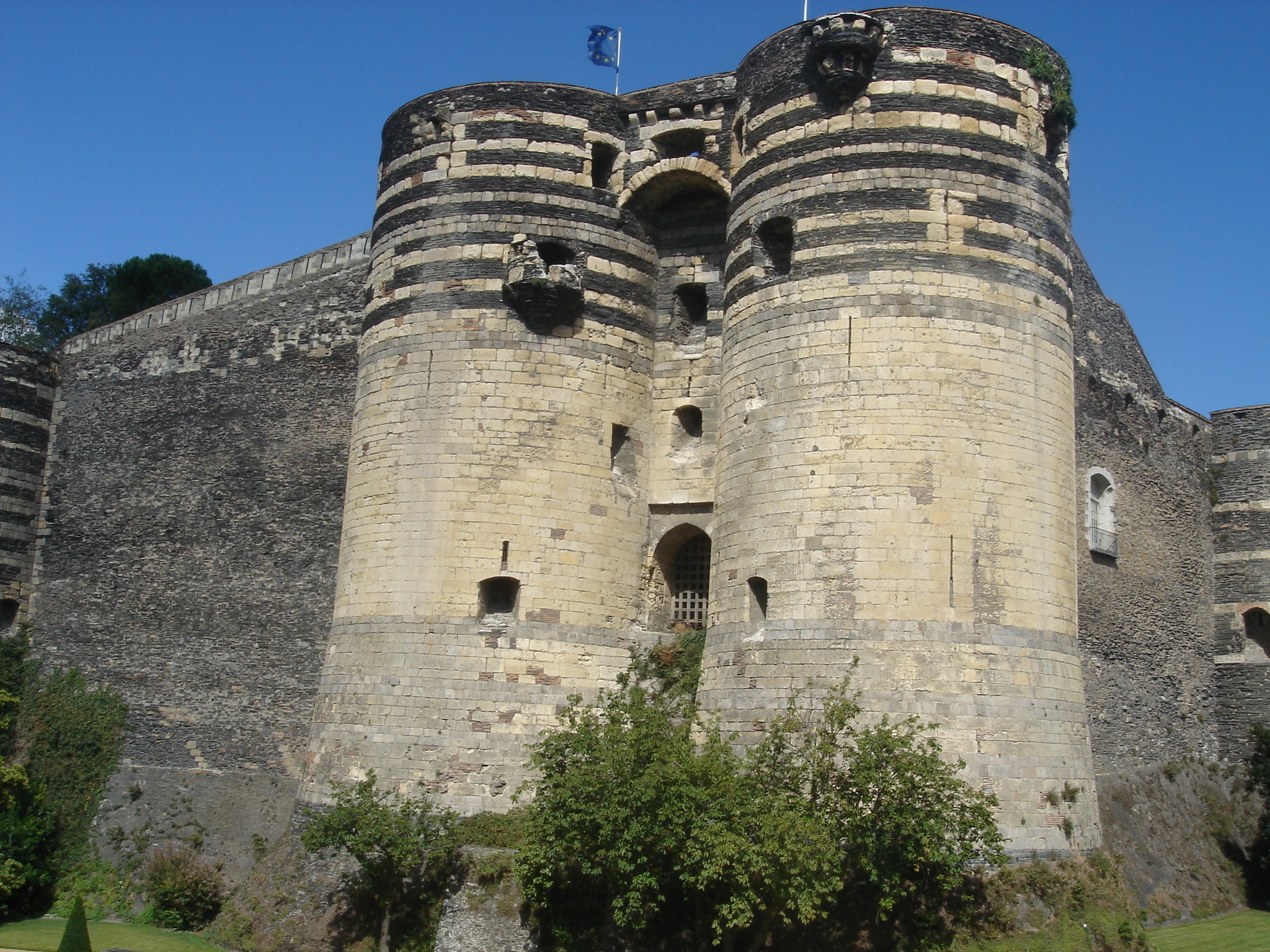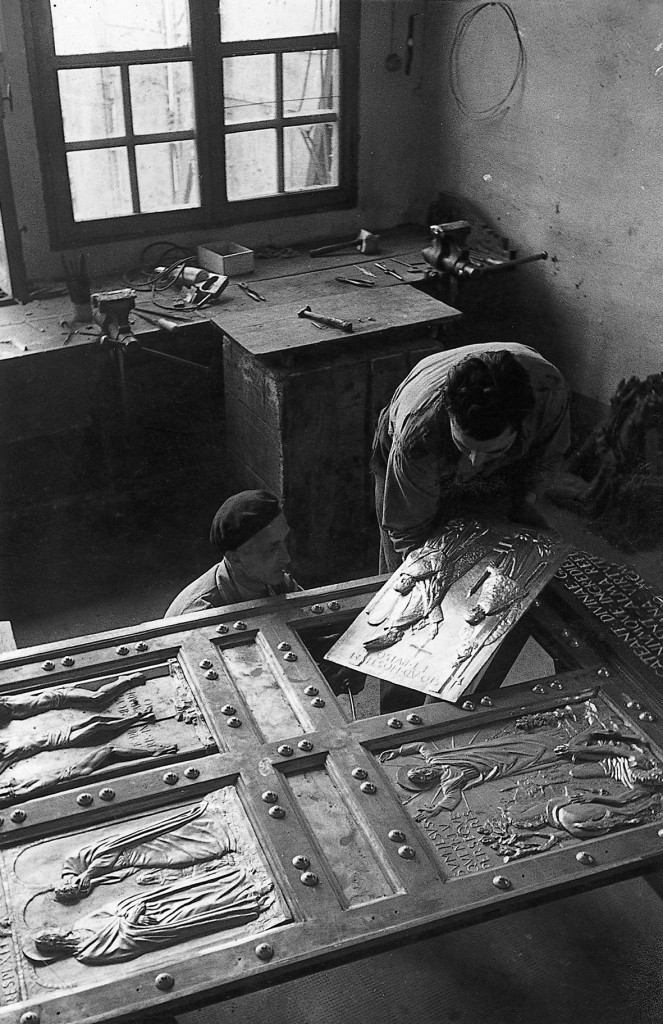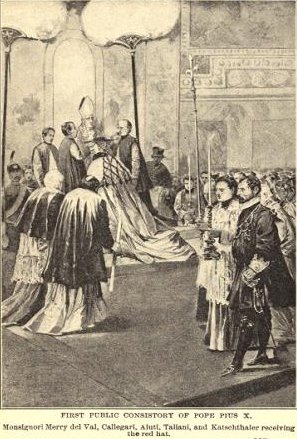|
Philippe De Lévis
Philippe de Lévis (1435–1475) (called the Cardinal of Arles) was a French people, French Catholic Church, Roman Catholic Bishop (Catholic Church), bishop and Cardinal (Catholicism), cardinal. He was born in the Kingdom of France on 4 November 1435, the son of Eustache de Lévis, baron of Quelus, and his wife Adelaïde de Cusan. Early in his life, Lévis became a protonotary apostolic. He was Holy Orders, ordained as a deacon. On 29 March 1454 he was elected Roman Catholic Archdiocese of Auch, Archbishop of Auch. He received the pallium on 29 November 1454. On 24 March 1463 he was transferred to the Ancient Diocese of Arles, metropolitan see of Arles. At the request of René of Anjou, Pope Sixtus IV made him a cardinal priest in the Papal consistory, consistory of 7 May 1473. He received the Galero, red hat in the Basilica di Santa Maria Maggiore on 10 May 1473, and the titular church of Santi Marcellino e Pietro al Laterano on 17 May 1473. He died in Rome on 4 November ... [...More Info...] [...Related Items...] OR: [Wikipedia] [Google] [Baidu] |
René Of Anjou
René of Anjou ( it, Renato; oc, Rainièr; ca, Renat; 1409–1480) was Duke of Anjou and Count of Provence from 1434 to 1480, who also reigned as King of Naples as René I from 1435 to 1442 (then deposed as the preceding dynasty was restored to power). Having spent his last years in Aix-en-Provence, he is known in France as the Good King René ( oc, Rei Rainièr lo Bòn; french: Le bon roi René). René was a member of the House of Valois-Anjou, a cadet branch of the French royal house, and the great-grandson of John II of France. He was a prince of the blood, and for most of his adult life also the brother-in-law of the reigning king Charles VII of France. Other than the aforementioned titles, he was for several years also Duke of Bar and Duke of Lorraine. Biography René was born on 16 January 1409 in the castle of Angers. He was the second son of Duke Louis II of Anjou, King of Naples, by Yolanda of Aragon. René was the brother of Marie of Anjou, who married the fu ... [...More Info...] [...Related Items...] OR: [Wikipedia] [Google] [Baidu] |
1435 Births
Year 1435 ( MCDXXXV) was a common year starting on Saturday (link will display the full calendar) of the Julian calendar, the 1435th year of the Common Era (CE) and Anno Domini (AD) designations, the 435th year of the 2nd millennium, the 35th year of the 15th century, and the 6th year of the 1430s decade. Events January–December * January 11 – Sweden's first Riksdag of the Estates is summoned under rebel leader Engelbrekt Engelbrektsson, who is elected ''rikshövitsman'' (military commander of the realm), in the absence of a king, on January 13. * January 13 – '' Sicut Dudum'', a papal bull forbidding the enslavement of the Guanche natives in Canary Islands by the Spanish, is promulgated by Pope Eugene IV. * February 2 – The Kingdom of Naples passes to René of Anjou. * By August – Battle of Podraga: Brothers Iliaș and Stephen II battle to a draw for the throne of Moldavia, leading to a joint rule by them, helped by the intervention of ... [...More Info...] [...Related Items...] OR: [Wikipedia] [Google] [Baidu] |
Holy Door
A Holy Door ( la, Porta Sancta) is traditionally an entrance portal located within the Papal major basilicas in Rome. The doors are normally sealed by mortar and cement from the inside so that they cannot be opened. They are ceremoniously opened during Jubilee years designated by the Pope, for pilgrims who enter through those doors may piously gain the plenary indulgences attached with the Jubilee year celebrations. In October 2015, Pope Francis broke with tradition in having each Roman Catholic diocese throughout the world designate one or more local Holy Doors during the Extraordinary Jubilee of Mercy, so that Catholics could gain the plenary indulgences granted during the Jubilee year without having to travel to Rome. History Pope Boniface VIII began the tradition of the Holy Year, known as a Jubilee, in 1300 and the Catholic Church has celebrated them every 25 years or so ever since. A major part of the Holy Year for Catholics is a pilgrimage to Rome and the ritual passin ... [...More Info...] [...Related Items...] OR: [Wikipedia] [Google] [Baidu] |
Rome
, established_title = Founded , established_date = 753 BC , founder = King Romulus (legendary) , image_map = Map of comune of Rome (metropolitan city of Capital Rome, region Lazio, Italy).svg , map_caption = The territory of the ''comune'' (''Roma Capitale'', in red) inside the Metropolitan City of Rome (''Città Metropolitana di Roma'', in yellow). The white spot in the centre is Vatican City. , pushpin_map = Italy#Europe , pushpin_map_caption = Location within Italy##Location within Europe , pushpin_relief = yes , coordinates = , coor_pinpoint = , subdivision_type = Country , subdivision_name = Italy , subdivision_type2 = Region , subdivision_name2 = Lazio , subdivision_type3 = Metropolitan city , subdivision_name3 = Rome Capital , government_footnotes= , government_type = Strong Mayor–Council , leader_title2 = Legislature , leader_name2 = Capitoline Assemb ... [...More Info...] [...Related Items...] OR: [Wikipedia] [Google] [Baidu] |
Santi Marcellino E Pietro Al Laterano
Santi is used as: People with the surname * Brenden Santi (born 1993), Australian-Italian rugby league player * Domenico Santi (1621–1694), also known as il Mengazzino, Italian painter * Emanuele Santi, Italian economist and political scientist * Enrico Mario Santí, Cuban-American writer and scholar * Franco Biondi Santi (1922–2013), Italian winemaker * Giancarlo Santi (born 1939), Italian director and screenwriter * Giorgio Santi (1746–1822), Italian scientist * Giovanni Santi (1435–1494), Italian painter and decorator, father of Raphael * Guido De Santi (1923–1998), Italian racing cyclist * Guido Santi, filmmaker, director and producer * Marco de Santi (born 1983), Brazilian professional vert skater * Nello Santi (1931–2020), "Papa Santi", Italian conductor * Pietro Santi Bartoli (1615–1700), Italian engraver, draughtsman and painter * Sebastiano Santi (1788–1866), Italian painter * Simone Santi (born 1966), Italian volleyball referee * Tom Santi (born 19 ... [...More Info...] [...Related Items...] OR: [Wikipedia] [Google] [Baidu] |
Titular Church
In the Catholic Church, a titular church is a church in Rome that is assigned to a member of the clergy who is created a cardinal. These are Catholic churches in the city, within the jurisdiction of the Diocese of Rome, that serve as honorary designations symbolising the relationship of cardinals to the pope, the bishop of Rome. According to the 1983 Code of Canon Law, a cardinal may assist his titular church through counsel or through patronage, although "he has no power of governance over it, and he should not for any reason interfere in matters concerning the administration of its good, or its discipline, or the service of the church". There are two ranks of titular churches: titles and deaconries. A title ( la, titulus) is a titular church that is assigned to a cardinal priest (a member of the second order of the College of Cardinals), whereas a deaconry ( la, diaconia, links=no) is normally assigned to a cardinal deacon (a member of the third order of the college). If a card ... [...More Info...] [...Related Items...] OR: [Wikipedia] [Google] [Baidu] |
Basilica Di Santa Maria Maggiore
The Basilica of Saint Mary Major ( it, Basilica di Santa Maria Maggiore, ; la, Basilica Sanctae Mariae Maioris), or church of Santa Maria Maggiore, is a Major papal basilica as well as one of the Seven Pilgrim Churches of Rome and the largest Catholic Marian church in Rome, Italy. The basilica enshrines the venerated image of ''Salus Populi Romani'', depicting the Blessed Virgin Mary as the health and protectress of the Roman people, which was granted a Canonical coronation by Pope Gregory XVI on 15 August 1838 accompanied by his Papal bull ''Cælestis Regina''. Pursuant to the Lateran Treaty of 1929 between the Holy See and Italy, the Basilica is within Italian territory and not the territory of the Vatican City State.Lateran Treaty of 1929, Article 15 However, the Holy See fully owns the Basilica, and Italy is legally obligated to recognize its full ownership thereof and to concede to it "the immunity granted by International Law to the headquarters of the diplomatic age ... [...More Info...] [...Related Items...] OR: [Wikipedia] [Google] [Baidu] |
Galero
A (plural: ; from la, galērum, originally connotating a helmet made of skins; cf. '' galea'') is a broad-brimmed hat with tasselated strings which was worn by clergy in the Catholic Church. Over the centuries, the red ''galero'' was restricted to use by individual cardinals while such other colors as black, green and violet were reserved to clergy of other ranks and styles. Description When creating a cardinal, the pope used to place a scarlet ''galero'' on the new cardinal's head in consistory, the practice giving rise to the phrase "receiving the red hat." In 1969, Pope Paul VI issued a decree ending the use of the ''galero''. Since that time, only the scarlet ''zucchetto'' and '' biretta'' are placed over the heads of cardinals during the papal consistory. Some cardinals continue to obtain a ''galero'' privately so that the custom of suspending it over their tombs may be observed. Raymond Cardinal Burke has been known to publicly wear the ''galero'' on occasion in the 2 ... [...More Info...] [...Related Items...] OR: [Wikipedia] [Google] [Baidu] |
Papal Consistory
In the Roman Catholic Church a consistory is a formal meeting of the College of Cardinals called by the pope. There are two kinds of consistories, extraordinary and ordinary. An "extraordinary" consistory is held to allow the pope to consult with the entire membership of the College of Cardinals. An "ordinary" consistory is ceremonial in nature and attended by cardinals resident in Rome. For example, the pope elevates new cardinals to the College at a consistory; Pope Francis has called consistories for ceremonies of canonization. A meeting of the College of Cardinals to elect a new pope is not a consistory, but a conclave. History The term ''consistory'' comes from the la, con-sistere; "stand together".''Papal Consistory'' by Kevin Knight (Catholic Encyclopedia, 2009) Early popes conferred with their Roman presbytery which included ... [...More Info...] [...Related Items...] OR: [Wikipedia] [Google] [Baidu] |
Cardinal Priest
A cardinal ( la, Sanctae Romanae Ecclesiae cardinalis, literally 'cardinal of the Holy Roman Church') is a senior member of the clergy of the Catholic Church. Cardinals are created by the ruling pope and typically hold the title for life. Collectively, they constitute the College of Cardinals. Their most solemn responsibility is to elect a new pope in a Papal conclave, conclave, almost always from among themselves (with a few historical exceptions), when the Holy See is vacant. During the period between a pope's death or resignation and the election of his successor, the day-to-day governance of the Holy See is in the hands of the College of Cardinals. The right to participate in a conclave is limited to cardinals who have not reached the age of 80 years by the day the vacancy occurs. In addition, cardinals collectively participate in Papal consistory, papal consistories (which generally take place annually), in which matters of importance to the Church are considered and new ... [...More Info...] [...Related Items...] OR: [Wikipedia] [Google] [Baidu] |
Pope Sixtus IV
Pope Sixtus IV ( it, Sisto IV: 21 July 1414 – 12 August 1484), born Francesco della Rovere, was head of the Catholic Church and ruler of the Papal States from 9 August 1471 to his death in August 1484. His accomplishments as pope included the construction of the Sistine Chapel and the creation of the Vatican Library. A patron of the arts, he brought together the group of artists who ushered the Early Renaissance into Rome with the first masterpieces of the city's new artistic age. Sixtus founded the Spanish Inquisition through the bull ''Exigit sincerae devotionis affectus'' (1478), and he annulled the decrees of the Council of Constance. He was noted for his nepotism and was personally involved in the infamous Pazzi conspiracy. Early life Francesco was born to a family of modest means from Liguria, Italy, the son of Leonardo della Rovere and Luchina Monleoni. He was born in Celle Ligure, a town near Savona. As a young man, Della Rovere joined the Franciscan Order, ... [...More Info...] [...Related Items...] OR: [Wikipedia] [Google] [Baidu] |





